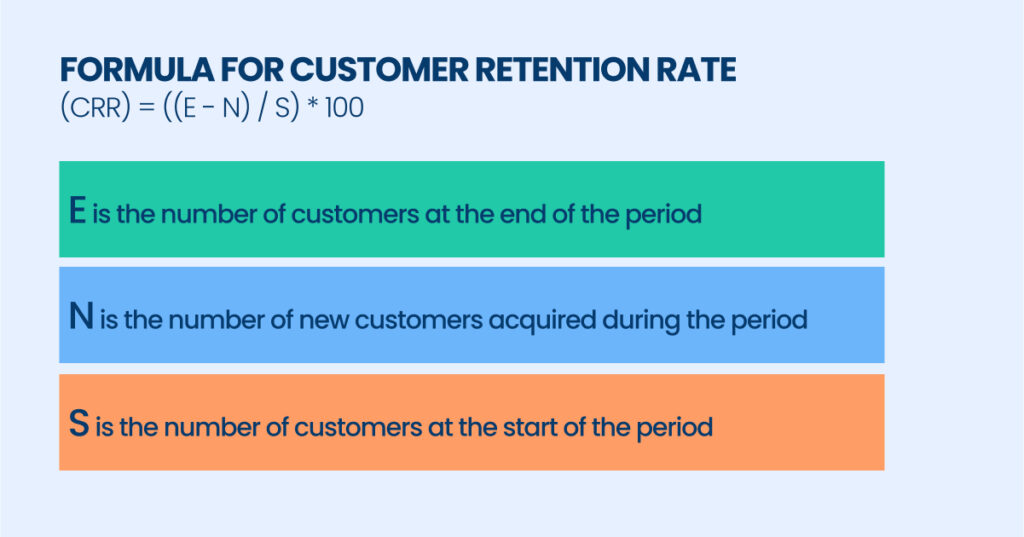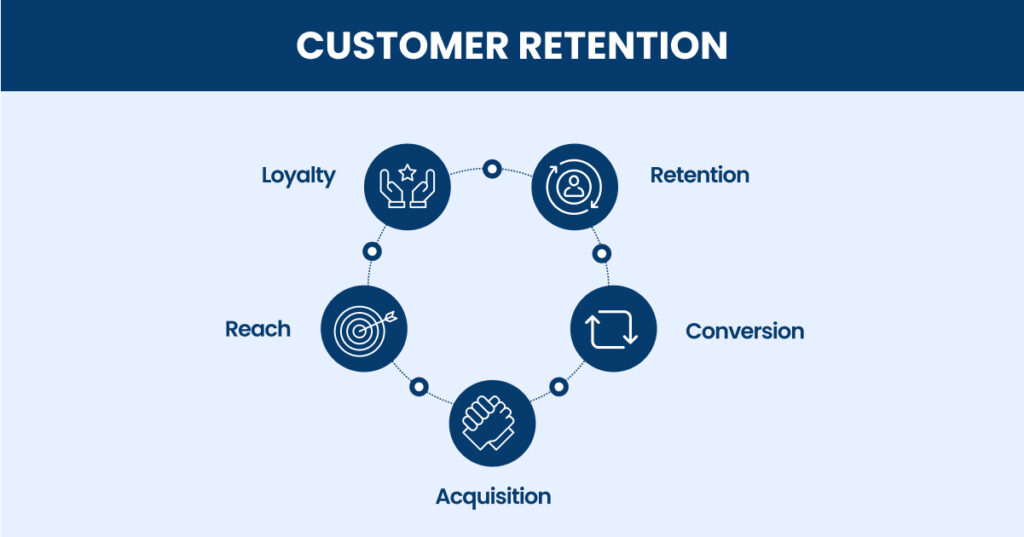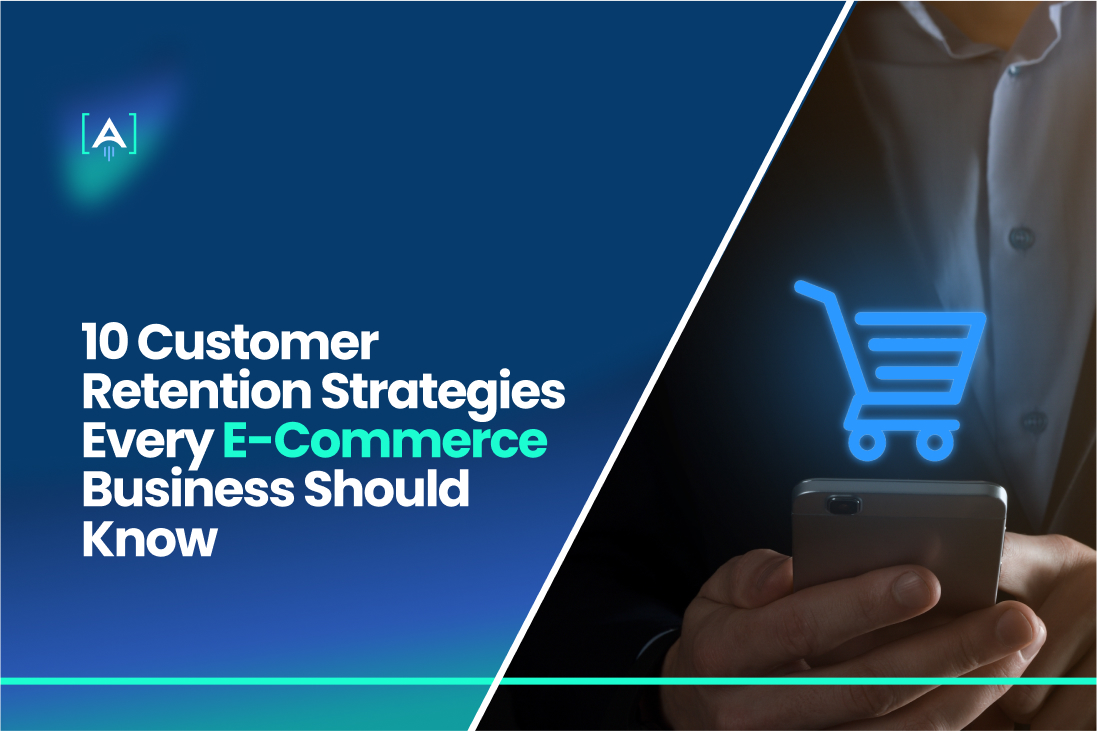I should disappoint you if you are actively thinking only about attracting new customers.
You are in the wrong direction!
The primary focus should be customers who have previously used your service or products. And what is it called? Customer Retention.
E-commerce marketing prioritizes their presence at all stages of the work process.
Source: Demandsage
This blog post will explore the essence of Customer Retention, its importance, and the key Strategies.
Understanding Customer Retention for E-Commerce
Customer retention for e-commerce refers to the marketing strategies and practices used to keep existing customers engaged and encourage repeat purchases.
It’s a crucial aspect of any e-commerce business, as retaining loyal customers is often more cost-effective than acquiring new ones.
By focusing on e-commerce customer retention, businesses can significantly boost their lifetime value, ensuring each customer contributes more revenue over their relationship with the brand.
Effective retention strategies include personalized marketing, loyalty programs, exceptional customer service, and regular communication through emails and social media. These tactics help build a strong customer bond, making them feel valued and appreciated.
Maintaining high levels of customer retention can suggest a substantial benefit in the competitive landscape of retail e-commerce sales.
Loyal customers are not only more likely to repeat purchases, but they also tend to spend more per transaction and are more likely to recommend the brand to others.
This word-of-mouth promotion can drive new customer acquisition at a lower cost. Therefore, investing in customer retention strategies is essential for e-commerce businesses aiming to maximize their revenue and growth.
By enhancing the shopping experience and consistently meeting customer expectations, businesses can foster long-term relationships that drive sustainable success.
Calculating Customer Retention Rate
Calculating customer retention for an e-commerce business is a vital process to understand how well a company retains its customers over a specific period.
This metric is crucial because high retention rates indicate satisfied, loyal customers, which in turn drives higher customer lifetime value (CLV). To calculate e-commerce customer retention, businesses typically use the following formula:

This model helps e-commerce businesses measure the percentage of customers retained over time. Understanding the essential data involved in this calculation is key to making informed decisions. The primary data points needed are the number of customers at the beginning and end of a period and the number of new customers acquired during that same period.
Businesses can gather this data by using customer relationship management (CRM) systems, sales records, and other tracking tools.
For online businesses, especially those involved in mobile commerce, it’s also useful to analyze mobile-specific data to see how mobile users’ retention compares to desktop users.
Once the data is collected, the retention rate is calculated using the formula. A high retention rate suggests that customers are satisfied with the product or service, making them likely to return. Conversely, a low retention rate indicates potential issues in customer satisfaction or engagement that need to be addressed.
Using the retention rate data effectively involves several steps:
- Identify Trends: Analyze retention rates over different periods to identify trends. This helps in understanding seasonal variations or the impact of specific marketing campaigns.
- Segment Customers: Break down retention rates by customer segments, such as age, location, purchase history, or mobile vs. desktop users. This segmentation can reveal which groups are more loyal and which need more attention.
- Assess Customer Feedback: Use surveys and feedback forms to understand why customers stay or leave. This qualitative data complements the quantitative retention rate, providing deeper insights into customer behavior.
- Optimize Marketing Strategies: Use the insights gained to tailor marketing strategies. For example, if mobile commerce users show lower retention, improving the mobile shopping experience or offering mobile-exclusive promotions may be necessary.
- Improve Customer Experience: Invest in enhancing the overall customer experience. This includes improving website usability, offering excellent customer support, and personalizing customer interactions.
Customer retention is not just about keeping a high retention rate but also about continuously improving the customer experience to enhance overall customer lifetime value.
By regularly calculating and analyzing customer retention, e-commerce businesses can make strategic decisions that foster loyalty, boost sales, and drive long-term growth.
The Importance of Retention Strategies in E-Commerce
Retention strategies are essential for the success of any e-commerce business, as they focus on keeping existing customers engaged and encouraging repeat purchases.
Effective ecommerce customer retention leads to higher customer lifetime value, which significantly impacts the overall profitability of a business.
By leveraging online channels and providing exceptional services online, businesses can make a loyal customer base that consistently returns.

Key retention strategies include personalized marketing, loyalty programs, excellent customer service, and regular communication through emails and social media.
1. Focus on Customer Retention
Focusing on customer retention is a vital strategy for any e-commerce business. Retaining previous clients is more cost-effective than acquiring new ones, and loyal customers tend to make repeat purchases, contributing significantly to revenue.
Source: Business-to-business
The customer experience is everything, encompassing every interaction a customer has with your business—from the initial outreach to the purchase and post-purchase follow-up. Customers must consistently have positive experiences at each touchpoint to foster customer loyalty. This highlights the importance of prioritizing customer service.
Hire e-commerce marketing agency or customer-experienced sales and customer service professionals who can effectively represent your business to ensure top-notch customer service.
Whether managing the sales floor or addressing product queries on social media, your representatives should be polished, knowledgeable, and responsive.
This approach helps customers feel valued and cared for, strengthening their loyalty to your e-commerce company. In an online business environment, exceptional customer service retains customers and enhances your brand’s reputation, driving long-term success.
2. First and Early Purchases: Balancing Benefits and Potential Drawbacks
Incentivizing first and early purchases is a powerful strategy for boosting sales and attracting new customers to an electronic commerce business. This approach typically involves offering discounts, free shipping, or exclusive gifts to encourage initial transactions.
For an e-commerce company, such incentives can quickly increase the customer base and drive short-term revenue growth. While the benefits are clear, it’s important to comprehend and manage the potential side effects of this strategy to ensure long-term success.
Source: Business-to-business
Benefits and Positive Outcomes
Incentives are a great way to lower new customers’ barriers to making their first purchase. When an online store offers a compelling discount or free shipping, it reduces the perceived risk and cost for the customer, making them more likely to complete a purchase.
This initial boost can be crucial for establishing a customer base, especially for new or relatively unknown e-commerce companies.
Additionally, once customers make their first purchase, they are more likely to return if they had a positive experience, thus increasing the likelihood of repeat business and fostering customer loyalty.
Potential Drawbacks and Customer Perception
However, there are potential drawbacks to this approach that need careful consideration. One of the main side effects is the possibility of attracting price-sensitive customers who may not return without continuous discounts. These customers are often motivated by savings rather than loyalty to the brand.
If an e-commerce company relies too heavily on discounts, it might struggle to convert these initial purchasers into loyal, full-price-paying customers. This could erode profit margins over time and create an unsustainable business model.
Moreover, frequent incentives can sometimes devalue the perceived quality of the products. Customers might begin to see the brand as a discount retailer, similar to the perception challenges faced by some brick-and-mortar stores that frequently run sales.
This perception can make it difficult to establish a premium brand image or justify higher prices in the future.
Strategic Implementation and Balance
To mitigate these risks, e-commerce companies should implement incentives strategically. Offering a one-time discount for first-time customers can be effective, but it should be followed by a strong focus on customer experience and engagement.
For example, personalized follow-up emails, loyalty programs, and excellent customer service can help turn first-time buyers into repeat customers.
Another approach is to offer incentives that add value without heavily impacting profit margins, such as free shipping on orders over a certain amount or exclusive access to new products.
It’s also beneficial to analyze customer behavior and segment the audience.
Not all customers will respond the same way to incentives. By understanding the different motivations and behaviors of various customer segments, an online store can tailor its marketing efforts more effectively, offering the right incentives to customers at the right time.
3. Developing a Customer Loyalty Program
Developing a customer loyalty program is a strategic approach for e-commerce sites to enhance customer retention and drive repeat business. A well-designed loyalty program can significantly increase customer engagement by rewarding them for continued support and online purchases.
By incentivizing frequent buyers, e-commerce sites can encourage higher online sales and foster a community of loyal customers.
However, while the benefits of such programs are evident, it is important to understand and manage the potential side effects to ensure the program’s long-term success.
Benefits and Positive Outcomes
A loyalty program rewards customers for repeat e-commerce transactions, making them feel valued and appreciated.
This appreciation can strengthen their emotional connection to the brand, increasing customer retention and advocacy. E-commerce sites can significantly boost online sales as loyal customers are more likely to make frequent purchases and spend more per transaction.
Furthermore, loyalty programs can provide valuable data insights into customer behavior, preferences, and purchasing patterns, enabling businesses to tailor their marketing strategies effectively.
4. Provide Discounts to Returning Customers Acquired
Offering discounts to returning customers, in addition to loyalty programs, is another effective strategy for e-commerce businesses to encourage repeat purchases.
For example, you might offer free shipping on future orders or a 20% discount on the customer’s next purchase.
Regardless of the specific offer, discounts are generally well-received and can be the incentive that turns a one-time buyer into a repeat customer.
The approach is particularly effective when combined with other rewards or loyalty programs.
5. Email Marketing Strategy
Email marketing is a game-changing tool for an e-commerce company looking to enhance its customer retention strategy.
By effectively leveraging email marketing, businesses can maintain ongoing customer communication, keeping them engaged and encouraging repeat purchases.
Personalization and Segmentation:
- Personalizing emails and segmenting your customer base ensures the content is relevant to each recipient.
- Using customer data to connect emails to individual preferences and behaviors, an e-commerce company can make customers feel valued and understood, which is crucial for retention.
Automated Campaigns
- Implementing automated email campaigns, such as welcome series, post-purchase follow-ups, and re-engagement emails, helps maintain consistent contact with customers.
- These automated messages can provide valuable information, recommend products, and offer special promotions at the right times, enhancing the customer experience.
Content Value:
- Providing valuable content, such as tips, how-tos, and industry insights, keeps customers engaged and positions the e-commerce company as an authority.
- This is particularly important in business-to-business (B2B) email marketing, where sharing relevant, high-quality content can strengthen relationships with business clients.
Feedback and Surveys:
- Including feedback requests and surveys in email communications can show customers that their opinions matter.
- Gathering insights from these interactions helps improve products and services, boosting customer satisfaction and retention.
Clear Call-to-Action (CTA):
- Each email should complete a clear and compelling CTA that guides customers towards a specific action, whether it’s making a purchase, visiting the website, or engaging with the company on social media.
- A strong CTA increases the chances of conversion and keeps customers actively involved with the brand.
6. Personalized Experiences for Customer Retention Strategies
Understanding and catering to your customers on an individual level is crucial for building lasting relationships and driving repeat business. While segmentation is important, the depth of personalization can truly set your brand apart.
When you clearly understand your customers’ needs and challenges, you can tailor experiences that resonate deeply with them. This approach is not just about analyzing data but about using it effectively to enhance the shopping journey.
Personalization should be a cornerstone of your customer retention strategy. You can gain insights into your customers through surveys or by analyzing their shopping behaviors.
These insights enable you to create detailed customer profiles, which are essential for delivering targeted and relevant experiences.
By focusing on personalization, you can significantly improve customer satisfaction and loyalty.
For instance, sending personalized email recommendations based on past purchases or providing exclusive offers tailored to individual desires can make customers feel valued and understood.
Additionally, leveraging technology like AI and machine learning can enhance your ability to deliver these personalized experiences at scale.
7. Leveraging Social Media
Social media marketing is the precious tool for enhancing customer retention in the e-commerce landscape. It provides a dynamic platform for engaging with customers, fostering community, and building long-term loyalty.
When integrated effectively into a customer retention strategy, social media can significantly boost customer satisfaction and repeat business.
Source: Explodingtopics
- Engagement and Interaction: Social media platforms like Facebook, Instagram, Twitter, and LinkedIn offer direct communication channels with customers.
Engaging content, such as polls, Q&A sessions, and live videos, encourages interaction and keeps customers engaged. Responding promptly to comments and messages shows customers that their opinions matter, fostering a sense of community and loyalty.
- User-Generated Content: Inspiring customers to spread their experiences and purchases on social media is a powerful retention strategy.
User-generated texts, such as reviews, testimonials, and photos, act as social proof, enhancing your brand’s credibility.
Featuring this content on your e-commerce site and social media channels shows appreciation for your customers and strengthens their connection to your brand.
- Consistent Brand Voice: Keeping a strong brand voice across all social media channels helps build trust and recognition.
Whether through posts, comments, or direct messages, ensure that your communication reflects your brand’s values and personality. Consistency in messaging reinforces brand identity and fosters long-term loyalty.
8. Delight and Surprise Your Customers
Incentives are always beneficial, but sometimes, a touch of creativity can significantly boost customer loyalty. Offering unexpected special deals can make customers feel genuinely valued, enhancing their connection with your brand.
Source: Business-to-business
For instance, surprising customers with discounts or freebies when they least expect it can create a memorable experience, reinforcing their loyalty.
9. Considering a Subscription Model
Implementing a subscription model is a highly effective retention strategy for e-commerce businesses, providing a steady revenue stream and fostering long-term customer loyalty. Subscriptions offer customers consistent value and convenience, which inspire them to remain engaged with the brand over extended periods.
This model is especially advantageous for businesses offering consumable goods, curated products, or exclusive services, as it ensures regular, predictable sales while enhancing the overall customer experience.
Why it is important to have a subscription model:
- Predictable Revenue: Secures customers’ commitment through recurring payments, allowing for better sales forecasting and inventory management.
- Higher Customer Lifetime Value (CLV): Encourages repeat purchases, leading to greater overall spending compared to one-time transactions.
- Customer Insights: Provides valuable data on purchasing patterns and preferences, enabling more personalized marketing and product offerings.
10. Fast Shipping and Easy Returns
Fast shipping and easy returns are critical components of a successful retention strategy for e-commerce businesses. These elements significantly enhance the customer experience, fostering loyalty and repeat business.
In an increasingly competitive market, providing quick delivery and hassle-free returns can set an e-commerce company apart from its competitors.
How customers reflect on fast shipping and easy returns:
- Convenience: Customers appreciate the convenience of receiving their orders quickly and being able to return items effortlessly if necessary.
- Reliability: Fast shipping and easy returns build a sense of reliability, encouraging customers to choose your e-commerce site over others.
- Confidence: Knowing that they can return products without hassle makes customers more likely to make purchases, boosting their confidence in your brand.
- Positive Experience: Overall, positive shopping experiences, driven by quick deliveries and easy returns, lead to higher customer satisfaction and loyalty.
- Word-of-mouth: Reluctant customers are more likely to recommend your e-commerce business to others, generating organic growth through positive word-of-mouth.
Take the Bonus: Customer Insights Through Surveys
Surveys can cover different aspects of the customer experience, from product satisfaction and website usability to customer service interactions. They can be conducted through multiple channels, including email, social media, and directly on the e-commerce site.
The key is to keep surveys concise and focused, ensuring they are easy for customers to complete. Incentivizing participation with small rewards or discounts can also increase response rates.
The insights gained from the surveys can be instrumental in identifying trends, uncovering areas for improvement, and discovering new opportunities for innovation.
For example, if a significant number of customers express interest in faster shipping options, the business can prioritize enhancing its logistics. Similarly, if feedback indicates dissatisfaction with a particular product feature, the company can address these issues promptly.
Partner [A] Growth Agency for Gaining Customer Retention Strategies
If you are still finding it challenging to implement customer retention strategies, [A] Growth Agency is there for you. We specialize in data-driven approaches that ensure success and long-term customer loyalty.
Every business we work with is a partner. Accordingly, we’re invested in their success as deeply as our own, fostering a mutual growth journey.
Partner with us and boost your business growth!

